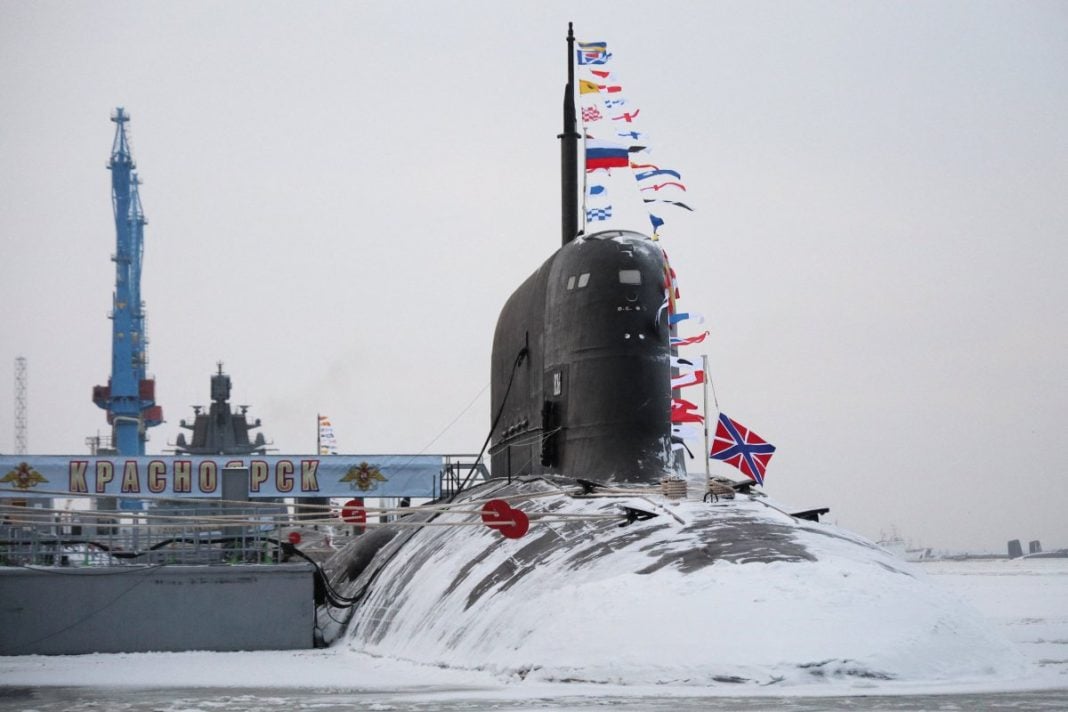The Russian Navy has successfully demonstrated its long-range offensive capabilities with the launch of a Kalibr cruise missile by the nuclear-powered submarine Krasnoyarsk, during naval drills held in the Pacific Ocean. According to the Russian Ministry of Defense, the missile accurately struck a coastal target at the Kura test site on the Kamchatka Peninsula from a distance exceeding 1,100 kilometers.
The Krasnoyarsk, a Project 885M “Yasen-M” class submarine, maneuvered covertly into its launch area prior to firing the missile from a submerged position—emphasizing its stealth and long-range precision strike abilities. The missile’s successful impact, confirmed by telemetry and objective control systems, demonstrates Russia’s capability to carry out strategic strikes from beneath the ocean surface, significantly enhancing the reach of its naval forces.
Following the missile strike, Krasnoyarsk continued with the next phase of its exercises, simulating anti-submarine warfare operations. The submarine detected and engaged a mock enemy sub using an advanced missile-torpedo system, which successfully neutralized the simulated target. These drills not only confirmed the submarine’s offensive land-attack proficiency but also its effectiveness in underwater combat scenarios, illustrating its versatility and combat readiness.
Admiral Alexander Moiseyev, Commander-in-Chief of the Russian Navy, applauded the submarine’s crew for their exemplary performance during the exercises. He underscored the strategic importance of the Krasnoyarsk to the Pacific Fleet, highlighting its dual-role combat capabilities.
Commissioned in December 2023, Krasnoyarsk is the second vessel of the Yasen-M class, which represents a leap forward in submarine design and technology. Built by the Sevmash shipyard, the submarine features advanced stealth attributes, sophisticated sensor arrays, and reduced acoustic signatures, making it among the quietest submarines in the world. It is armed with eight vertical launch silos capable of deploying Kalibr cruise missiles, Oniks supersonic anti-ship missiles, and future Zircon hypersonic missiles, offering formidable offensive options across land, sea, and undersea domains.
The Kalibr cruise missile, in its submarine-launched configuration, is designed for precision attacks against a variety of targets and can be equipped with conventional or nuclear warheads. Its range can exceed 1,500 kilometers, providing Russian submarines the ability to strike targets far beyond immediate combat zones. When launched from a stealth platform like Krasnoyarsk, the missile complicates detection and countermeasures, offering significant strategic leverage.
In a notable move in September 2024, Krasnoyarsk completed a historic transition from the Northern Fleet to the Pacific Fleet via the Northern Sea Route. This redeployment was aimed at reinforcing Russia’s presence in the increasingly contested Indo-Pacific region, placing one of its most advanced submarines closer to areas of growing geopolitical tension.
The implications of this successful missile test are far-reaching. For NATO and the United States, the demonstration of long-range precision strikes from a stealth submarine introduces a new layer of complexity in maritime and homeland defence planning. With capabilities to remain undetected while threatening key infrastructure or military assets, the Yasen-M class poses a credible challenge to conventional naval strategies and reinforces Russia’s undersea deterrent.
Additionally, this development enhances Moscow’s military posture in the Asia-Pacific and adds pressure on U.S. and allied forces operating in the region. It underscores the urgent need for investments in anti-submarine warfare systems, early-warning technologies, and forward surveillance as the balance of power in the world’s oceans continues to evolve.





